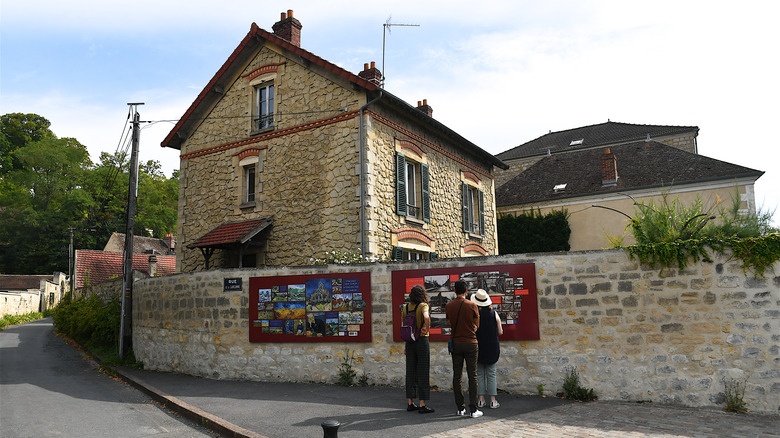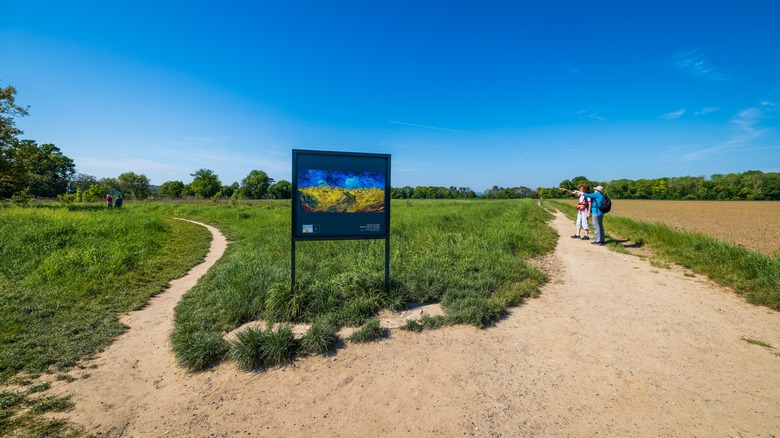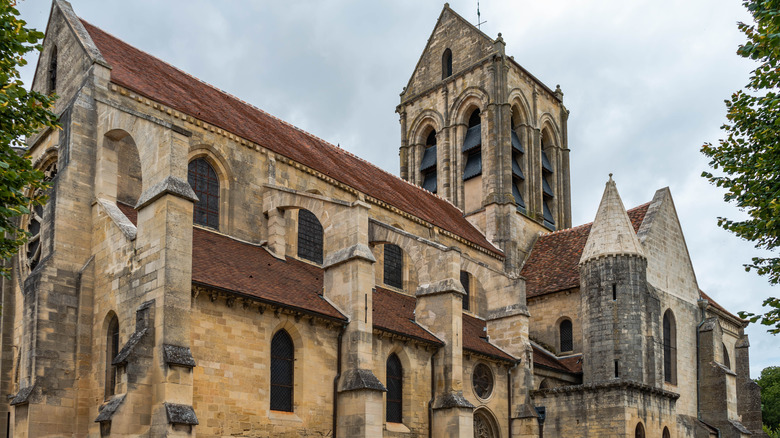Escape Paris Crowds At This Nearby, Little-Known Art Haven Village That Was Home To Van Gogh
Often overshadowed by Monet's gardens in Giverny, France, another artist's haven quietly sits right on the outskirts of Paris. Auvers-sur-Oise was once the home of Vincent Van Gogh and is a quiet hamlet nestled along the Oise River (hence its name). On a visit to this charming enclave, it becomes obvious why the legendary artist's hometown was often his muse. Stoic cathedrals sit on the outskirts of town, sprawling fields offer respite from the din of modern life, and you can walk in the footsteps of the Dutch painter at his humble home.
After exploring this beautiful corner of the Parisian countryside, should understand how Van Gogh completed a whopping 80 paintings in 70 days here. While there are plenty of other Paris day trips like sipping bubbly in Champagne, art fanatics and lovers of hidden gems will be particularly impressed with Auvers-sur-Oise.
Just an hour by train from the heart of Paris, this little-known, artsy village is a must-visit for those who are desperate to see a side of France that doesn't include queue after queue. You can also pat yourself on the back, knowing that you've sought out an underrated corner of France that few have explored, or even heard of. Simply hop on at Gare du Nord, the city's northern train station, and you'll find yourself transported to a world of solitude, leaving the City of Light's crowds far in the distance and making Paris Syndrome a distant afterthought.
Where to find Van Gogh's inspiration in Auvers-sur-Oise
Auvers-sur-Oise was often the subject of Van Gogh's paintings, so much so that he finished dozens here in just a few months, despite a mental health crisis. Visitors can discover many of his muses along The Artists' Pathway, a mapped trail that connects his favorite spots and displays the corresponding artworks. At the far eastern edge of town, you'll find the Church of Our Lady of Assumption (Eglisé Notre-Dame de l'Assomption), an architectural inspiration for "The Church at Auvers". This is just steps away from the room he rented at Auberge Ravoux, another spot that he used as a staging ground for his paintings, including a portrait of the innkeepers daughter, Adeline Ravoux. Continue up the street from the church to visit the sprawling pastures that inspired the work "Wheat Field with Crows". This is thought to have been Van Gogh's last painting, as he passed away on July 29th, 1890.
A bit further away in the north of town are the gardens of Charles-Francois Daubigny, yet another artist who called Auvers-sur-Oise home. Van Gogh painted several works of the flowers and landscapes here in 1890, including the three works titled, "Daubigny's Garden". Many of his muses were the people of Auvers-sur-Oise, including Dr. Gachet, who watched over Van Gogh following his time at the Saint Remy Asylum, and Marguerite Gachet, the doctor's daughter.
What to do in Auvers-sur-Oise
Continue following in the footsteps of Van Gogh's life by visiting more of his old stomping grounds and a few additional sites around town. Visitors can take a tour of La Maison de Docteur Gachet, the home of his attending physician, Dr. Gachet. Van Gogh painted and sought refuge in these very rooms.
Of course, the artist's home is another popular sight to see. Step inside the Maison de Van Gogh, once the aforementioned Auberge Ravoux, to see where he painted, slept, and took his final breath. You'll even have the chance to visit the dining room nook where he often conversed with fellow artists and worked on his masterpieces. Pop by Parc Van Gogh, where you can pay tribute to the artist's statue.
Although the Chateau d'Auvers was never Van Gogh's subject, visitors can uncover an exhibit that details the history of the Impressionist movement, alongside paintings from artists like Charles-Francois Daubigny. Your final stop of the trip should be the artist's final resting place in the Auver-sur-Oise Cemetery, where the headstones of both Vincent and his brother Theo are found just east of the fields where he often painted.


